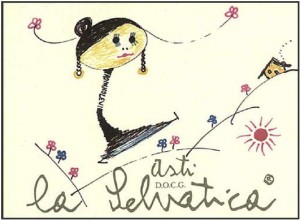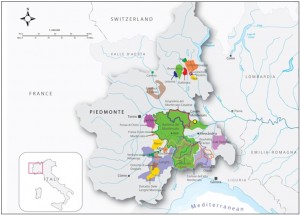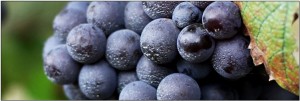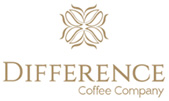They are without doubt the world’s greatest dessert-style sparkling wines, yet no Asti and Brachetto d’Acqui performed well in the first year of the Champagne & Sparkling Wine World Championships (CSWWC). Was this due to receiving entries exclusively from the dregs of the industry or had the overall quality of both appellations nose-dived? I was a man on a mission to find out!…
One of the few disappointments of CSWWC 2014 was that La Selvatica, the “Premier Grand Cru” of Asti, had not been entered into the competition. I had fully expected Romano Dogliotti, the owner, to win the World Champion Aromatic Sweet Sparkling Wine trophy and, even if he did not, I was looking forward to discovering what bright, new rising star of Asti could challenge the Master of Moscato. Because surely Asti would win that particular trophy. What other sparkling wine could? Brachetto, perhaps? Maybe now again when an absolutely stunning Brachetto blows our mind, but 99 times out of 100 the winner must be Asti and when it is most of the smart money would be on Dogliotti, won’t it? Well, yes, but what if Asti is on a downward slide and has taken La Selvatica with it? Perhaps that explains the dismal performance of these two seemingly superior sweet aromatic sparkling wine appellations. As I said, I was a man on a mission …
Asti & Brachetto: the similarities & differences
Located in Piedmont, almost equidistant from Turin, Milan and Genoa, the Brachetto d’Acqui region is entirely encompassed within the eastern two-thirds of the Asti region itself.
Asti was once Asti Spumante, and may still be sold as such, but may also be labelled as Asti, plain and simple, and most indeed are. Likewise Brachetto d’Acqui can be sold simply as Acqui, but unlike Asti, most are in fact still labelled Brachetto d’Acqui and, in conversation, the name tends to get shortened to Brachetto, not Acqui.
Asti is produced from 100% Moscato, Brachetto from 100% Brachetto.
There are hundreds of Muscat variants, but Moscato is synonymous with the Muscat Blanc à Petits Grains, which has the potential to provide the finest expression of all and any aromatic grapes. An aromatic grape is defined by its terpene content. There are more than 400 naturally occurring terpene compounds in the plant world, but only about 40 have been found in grapes or wine and relatively few of these are important components of any grape’s aroma. Muscat varieties are the most terpene-laden of all grape varieties, and their typically grapy aroma is primarily due to a combination of just three terpenoid alcohols: linalool, geraniol and nerol. Although, of these three, Linalool is the most important contributor to the Muscat aroma and Geraniol is the primary active aromatic compound in determining the varietal aroma of Gewürztraminer, Geraniol is often the key to quality for Asti. When I first visited Asti, I was tasting in the lab of one producer and pulled two wines out. “What connects these two wines?” I asked “They not only stand out in terms of quality and intensity, but also have a definite peachiness to the fruit, which gives the varietal character more specificity.”
“Geraniol” he declared and dug out some analyses that were stapled to purchase forms. “Although it is nerol that has the peach aroma and geraniol has more of a rose-scented aroma, geraniol seems to intensify the nerol’s peachy fruit character. We therefore look for geraniol content and, providing other quality paramaters of the grapes are good, there is a sliding scale whereby the higher the geraniol content, the more we pay per kilo.”
The Brachetto is an aromatic grape in the terpene sense, yet it is nowhere as aromatic as Moscato or, indeed, as fine. It is also black, not white. Brachetto’s primary terpenes are geraniol and nerol (relatively little linalool, Asti’s primary terpene), but its dominant aromatic compound is not even a terpene. The key aroma-building compound in Brachetto is 2-phenylethanol, a higher alcohol (aka fusel oil) that is found naturally in the grape and survives fermentation. This higher alcohol has a rose-petal aroma, but it is more rustic than rose-petal aromas derived from terpenes. Even with the most careful handling, Brachetto rarely stands out in terms of any real intensity or purity.
Because of the need to retain residual sugar, both Asti and Brachetto are relatively low-alcohol products: Asti (7-9.5%) and Brachetto (minimum of 5%). The method of production for both Asti and Brachetto d’Acqui may either be in autoclave (aka metodo martinotti, Charmat method or cuve close) or bottle, although most are in fact in autoclave. So much so for Asti that the method is also known as metodo Asti just as it is known as metodo Prosecco in Conegliano-Valdobbiadene. If it is necessary for Prosecco, as indeed it is, then it is absolutely vital for Asti, even if a few upmarket cuvées of Asti Metodo Classico are trying to coin it in. With such a terpene-laden wine, Asti really needs all the freshness it can get, and yeast-ageing does nothing but blur the purity and dull the freshness of the Moscato grape. Although the best Asti Metodo Classico get the wines off the yeast as quickly as possible (usually just 40 days), the mousse is not as smooth or as silky as the best Asti Metodo Asti. If the producers of such wines want to succeed with such a young metodo classico they should reduce the mousse to 4 bar.
The Asti Tasting
Plenty of journalists are happy to visit Asti for to taste the Barbera, but they do not get many who ask to taste Moscato spumante, so you might think, even with short notice between Prowein and Vinitaly, that producers could pull their proverbial thumb out of their proverbial bum. It was not, after all, much of a logistical exercise to drop off a bottle or two at their local consorzio was it? Well obviously it was from the sight of just 23 Asti facing me. On the other hand, with no less than 11 of these likely to pick up a Silver medal or higher (that being merely my personal opinion, the wines would have to be entered into the Champagne & Sparkling Wine World Championships 2015 to see if my two fellow judges agree with me), the success rate of those confident enough to present their Asti was impressive.
I travelled to Asti hoping I might find other boutique spumante to rival La Selvatica, but sadly that was not to be, although I was extremely happy to find that Romano Dogliotti had not dropped his extraordinarily high standard. In general, the best Asti had the most residual sugar, although this did not guarantee their performance as many of the worst Asti also had high residual sugar. However, it took an exceptionally fine Asti, such as Gancia Asti Cuvee, to approach Gold medal quality with one of the lowest residual sugar levels. Gancia is of course one of the largest producers and although this was the only Asti that producer submitted, on the whole it is fair to say that most of the largest producers are capable of both the best and the worst Asti. On a more specific note, I would love to see Gancia bring back its Camillo Gancia, which used to be the greatest Asti prior to La Selvatica. The industry needs a big house to go head-to-head with Romano Dogliotti to encourage other producers to aim for the stars, however large or small their production might be.
Of the 12 that did not pass muster, half were technically okay, including two that I suspect would get a Bronze medal (which we classify as “failure” in the CSWWC, the winners of which must all be special, as far as we are concerned). The other half (or a quarter of the total submitted) were either unpleasant or faulty, including one that was corked and two that had bacterial infections (one of which was from a very large producer, which does not say much for its quality control regime).
I was pleasantly surprised how fresh some of the 2013s were, although as a rule-of-thumb I would prefer to see all Asti sold by the end of the year following the harvest.
Banfi Asti NV
Asti DOCG, 100g/l
A rich, yet fine and complex Moscato aroma with notes of peach. Beautifully rich, smooth, and sumptuously sweet on the palate. This would surely win a Gold medal in the CSWWC.
Bera Asti 2014
Asti DOCG 109g/l
Exquisitely rich and ultra-fruity. Superior Asti, without doubt. Silver-Gold?
Bersano Asti NV
Asti DOCG, 98g/l
This is just so very smooth that it stands out above other Bronze medal Asti. Bronze-Silver?
Ca’dei Mandorli Asti 2013
Asti DOCG, 92g/l
A fine tangerine-satsuma note to the fruit is this Asti’s point of difference and it has a lovely creamy finish. Silver-gold?
Canti Asti 2014
Asti DOCG, 90g/l
Although this is not the sweetest Asti, it has very seductive aromatics and the finest, silkiest mousse. Silver medal potential.
Fontanafredda Asti 2013
Asti DOCG, 100g/l
Just so deliciously rich and sumptuous! Definitely Silver medal potential.
Gancia Asti Cuvee NV
Asti DOCG, 88g/l
It takes an especially fine Asti to go down in residual sugar, yet noticeably up in intensity. Must be at least Silver quality, perhaps even a Gold?
La Caudrina Asti 2014 La Selvatica
Asti DOCG, 115g/l
Like walking through a lush flower garden on a perfectly still day and the floral aromas are so intense that they hang heavily in the air. Exceptionally fine, with an amazing intensity of terpene-rich Moscato fruit on the palate. This is Asti at its greatest and great Gold medal quality too.
Marenco Asti 2014
Asti DOCG, 105g/l
Exceptionally fine floral aromatics, seamlessly followed by a deep, resounding richness of Moscato fruit. Very fine indeed. Silver-Gold?
Tre Secoli Asti NV
Asti DOCG, 96g/l
This comes in a s strange, dumpy bottle made from clear glass (consumers beware), but it has exceptionally high acidity, which stands out on the aftertaste, despite its very smooth mousse. Bronze-Silver?
Vinchio-Vaglio Asti NV Valamasca
Asti DOCG, 89g/l
Deliciously, but not overly, sweet with a smooth, creamy palate and satsuma-nectarine fruitiness on the finish. A solid Silver I would have thought.
The Brachetto d’Acqui Tasting
From a purely qualitative perspective, this was a much less impressive and, numerically, if I was disappointed by the meagre Asti tasting of 23 wines, what was I to think about 11 Brachetto d’Acqui? Fifteen years ago the consorzio used to send me two or three times as many samples for my annual tasting based in the UK and I fly across half of Europe to taste less than a dozen wines … I know this appellation has gone through hard times in recent years, but ignoring a low-cost, minimum effort to put their wines up for review is hardly way to rectify the situation. Part of the reason for the demise of Brachetto d’Acqui is that it is perceived to be old-hat, a wine of yester-year, but much of that is the producers’ own fault. Fifteen years ago the wines were fresher, brighter and livelier. Today they are every bit as tired as their old-fashioned image. Some are not just old, but oxidised or taste as if they have been blended with old, oxidised wines.
However, even when they were fresher, brighter and livelier, they had their shortcomings, which could and should have been rectified by a younger generation of winemakers. There always has been a lack of aromatic intensity and purity in these wines, and this has not been helped by a noticeable presence of phenolic compounds, which detract from the elegance and finesse, contributing to their rather rustic character. I suppose producers could use specialist yeasts or enzymes to free-up terpenes for more aromatic impact, but if I had a couple of hectares of Brachetto in the area that would be the last thing I would do. My initial thoughts would be:
- Persuade the consorzio to lobby for bringing down the Brachetto to a maximum of 85% (precedents for the 85% rule exists in other DOCGs such as Prosecco in Conegliano-Valdobbiadene and supposedly pure Pinot Noir cuvées in the more local Alta Langa DOCG).
- Allow any other locally-grown aromatic varieties for the balance of 15% (DOCG precedents exists), but aim to use the most expressive, top-quality Moscato to turbo-charge the aromatics.
- Back-blend the wine after second fermentation in the autoclaves with all or part of the 15% Moscato as unfermented juice (DOCG precedents exists) to increase the residual sugar as well as lifting and freshening the aromatics.
- Ban NV, make vintage obligatory, and make that vintage 100% of the year indicated.
- Before the any changes in the DOCG law comes into force, start harvesting at least part of the Brachetto at a riper degree to enrich the terpene content and to make the terpenes easier to extract.
Gancia Brachetto d’Acqui NV
Brachetto d’Acqui DOCG, 105g/l
A deep, fresh, summer fruit coulis colour that is nice and deep. On the downside this cuvée has more grip than most Brachetto, but it also has a very good, well-balanced sweetness and fine, long, clean finish. Definitely Silver medal potential for this appellation.












